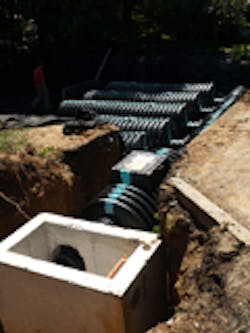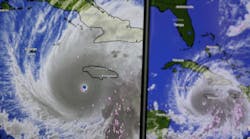CULTEC Aids in Pennypack Creek Storm Water Initiative
For almost three decades, Pennsylvania’s Pennypack Creek Watershed has witnessed steady urbanization resulting in increased pollution, threatened water quality and weakened sustainability in the region.
As a result, two of the state’s major universities – Temple and Villanova – have combined to form a larger, more powerful storm water initiative to implement and study the effects of storm water best management practices (BMPs). CULTEC’s subsurface infiltration systems are an integral part of this initiative.
The Temple-Villanova Sustainable Stormwater Initiative (T-VSSI) will test the effectiveness of a subsurface infiltration system consisting of 25 Recharger 330 heavy-duty chambers and one Stormfilter In-line Filter. The entire system will have the capacity to store and infiltrate more than 10,000 gallons of storm water runoff.
In addition to the infiltration gallery, the empirical study will test a number of other BMPs including wetlands, ponds and riparian buffers and use the findings to develop improved storm water management planning and techniques for Southeastern Pennsylvania.
The Pennypack Creek Watershed covers 56-sq-miles over 12 municipalities and includes of population of more than 300,000 people. The watershed covers parts of Montgomery and Bucks counties and the city of Philadelphia and is almost completely built-out leading to a number of problems, including increased flooding, increased levels of silt in the rivers and other ecological degradation. The key issues in this area are unplanned land development, poor storm water management, impaired water quality and outdated floodplain maps.
“By studying the system installed at the site, we will be able to effectively show how municipalities can retrofit existing facilities where storm water management is lacking,” said Richard Nalbandian, Research Fellow from the Temple University Center for Sustainable Communities. “Furthermore, we can recommend these types of underground systems as solutions in future situations where land constraints may limit BMP possibilities.”
Source: Cultec


